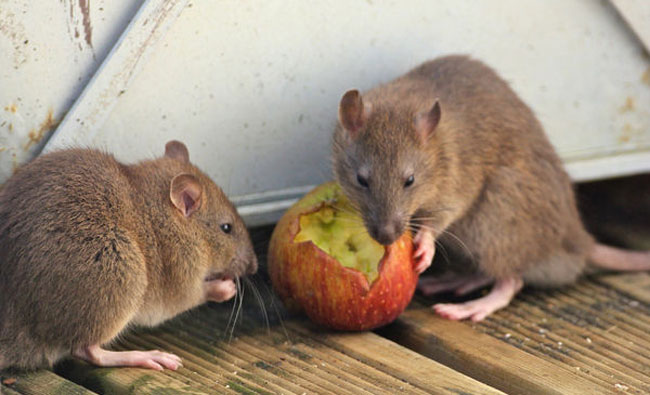How Rats Manage to Outwit Us…Sometimes
By Chris Williams on September 24, 2013.

When it comes to controlling rats, those of us in the pest control industry know that we have our work cut out for us. Brown (Norway) rats have senses that are more highly developed than ours which occasionally allows them to outwit our pest control efforts.
A brown rat’s senses of smell, vision, kinesthetic sense, taste, touch, and hearing are all good to excellent—except one. That’s vision. Brown rats have poor vision and can see only for a distance of 30 feet. They are also almost colorblind. For this reason, rodenticide baits can be dyed bright colors without rejection by rats. They don’t use vision to find the bait but rely on other senses instead. However, their eyes are sensitive to light and can detect motion and recognize simple shapes even in low light.
Brown rats have a keen sense of smell that helps them find food, follow paths, identify new objects, and tells them whether another rat is friend or foe. They can also pinpoint sounds to within a half foot, and can hear and communicate in higher frequencies than humans can. Loud noises trigger escape reactions.
The sense of taste is highly developed in brown rats. You wouldn’t think a rat would be picky about its food, but brown rats can detect some chemicals at parts per billion concentrations and can readily detect contaminants in their food. Our technicians have to store rat bait separately from other pesticides because the rats can detect the pesticide and may reject the bait. They can also detect stale bait so we have to be careful to replace baits often.
A Rat’s Movements are Memorized, not Random
Norway rats have one sense that we don’t—a kinesthetic sense. A rat’s kinesthetic sense is a memory of the movements required to run its territory. For example, a Norway rat running a section of its territory will always take the same 20 steps out from the hole in the wall, turn left at the packing crate, jump to the shelf on the right, and run 5 steps to the opening around the pipe. Every time the rat covers that territory, the muscle movements will be the same, at least until he encounters something new. In the dark or when frightened, rats use this sense to escape to bolt holes and runways.
If you make a change in a rat’s territory, move something or add a bait station, the rat will have to learn his route all over again. We know that when we place bait or traps in a rat’s territory, it will take some time before the rat will approach them. This is why we often pre-bait or pre-trap for rats. We place nontoxic baits or unset traps for a few days until the rat has investigated them and gets used to having them in his territory. Then we set the traps and add toxic bait. We can usually outwit the rats because we’ve learned to think like them.
Photo credit: Mark Philpott / Foter / CC BY-NC